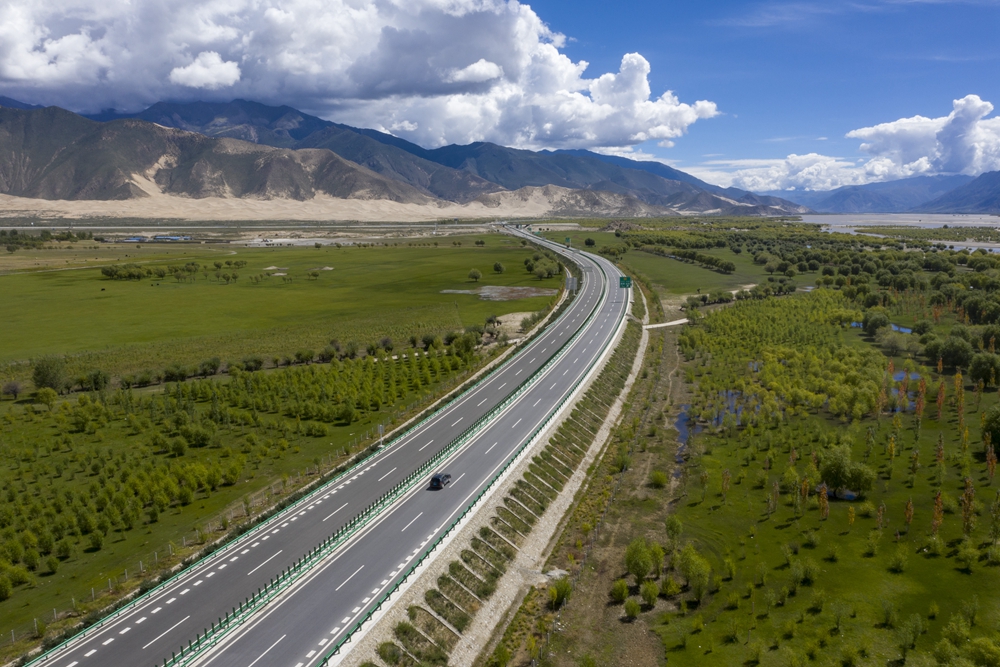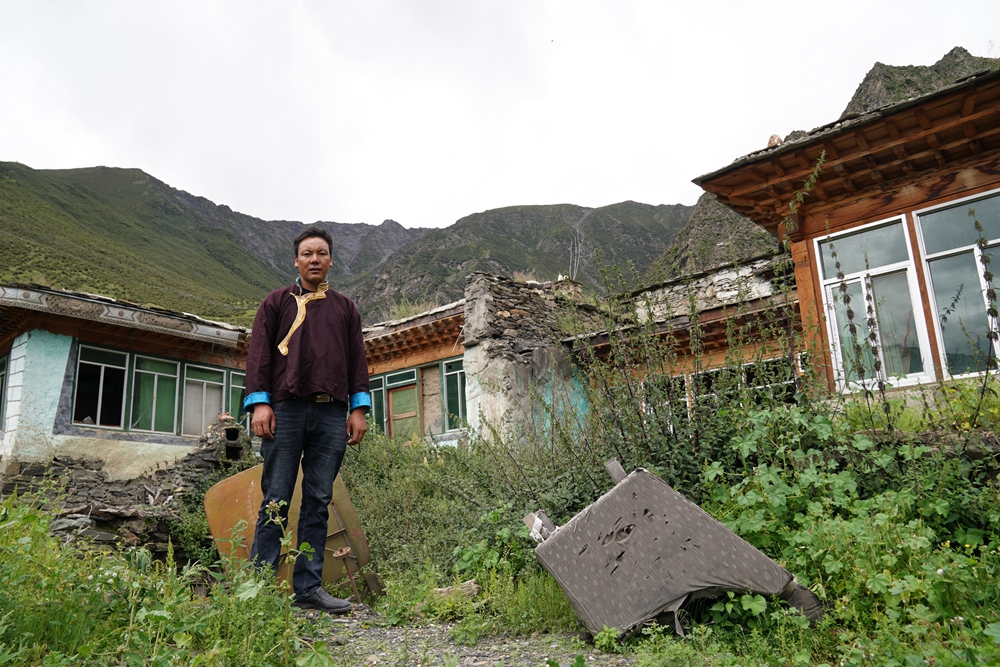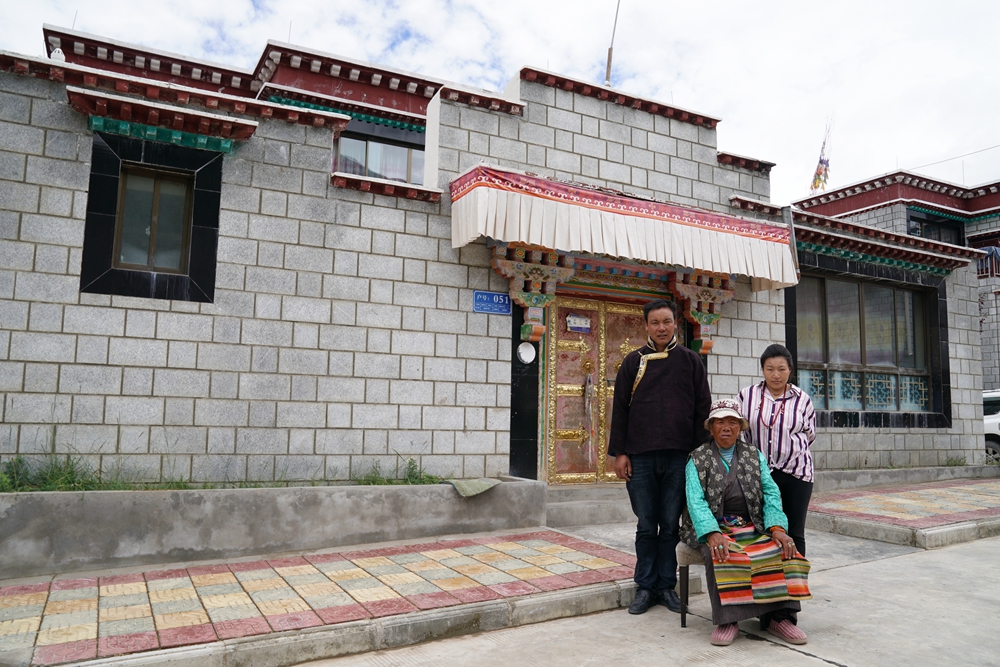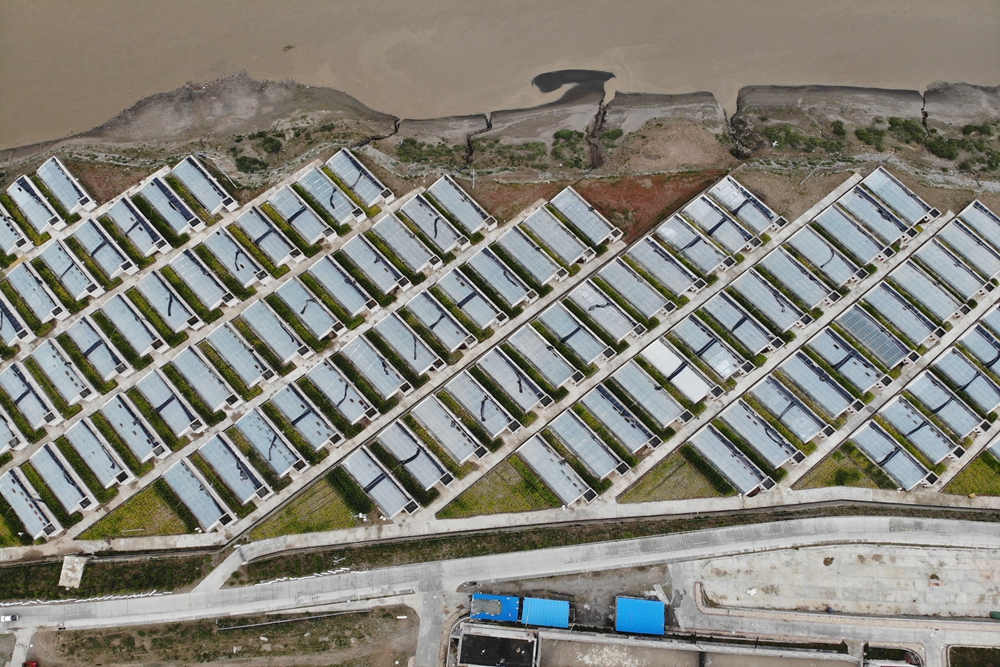| |




/
|
|
|
Phuntsog Gyatso, 33, seldom left his village in Sangri County, Shannan, Tibet Autonomous Region, in the first 30 years of his life. Both his mother and brother are disabled people who need care and support. As the only working person in the family, Phuntsog Gyatso had limited choices—he had to take care of the family and the highland barley fields all by himself. He could not think of finding jobs in the nearby town.
His village was located on top of a 4,053-meter-high mountain, and his highland barley fields were half way up the peak. There was no irrigation system. The family lived at the mercy of the elements. His mother and brother have been receiving basic living subsidies from the government, but the family was far from prosperous before 2017 due to the lack of other income sources. Transportation was another headache. "When the barley and potatoes were harvested, I had to carry all of them on my back. It was really tiring," Phuntsog Gyatso told Beijing Review. But things changed in June 2017 when his family, together with 422 other poor Tibetans, moved to Chugi New Village, built by the local government for those who used to live in inhospitable areas. The family of three got a brand new two-story house, which is 10 km away from the Sangri town center. The new village has 106 greenhouses with an irrigation system. Every household can apply for one greenhouse to grow vegetables or fruits. It not only provides every family enough greens to eat but also generates extra income through selling the vegetables. In addition, every household has been assigned farmland with access to irrigation systems. "Besides highland barley and potato, I now can plant wheat and a variety of vegetables. And I can water them whenever needed. It's much more convenient and productive," said Phuntsog Gyatso. And the relocation means much more than a new house for him. A year and a half after the relocation, he got married. With his wife taking care of the family, Phuntsog Gyatso was free to take up new jobs. He borrowed 300,000 yuan ($43,812) from a local bank and bought a concrete mixer in 2019, producing cement for construction sites. It brought him an income of 120,000 yuan ($17,525) in the first half of this year. All of the village's workforce, 221 villagers, have received free training on skills such as Tibetan tapestry weaving, driving and bricklaying. By the end of 2019, 38 percent of them had found stable jobs nearby, and others had been employed for environmental protection work. In 2019, the per-capita net income of Chugi villagers reached 12,294 yuan ($1,795). Villagers of Chugi are not the only beneficiaries of the relocation. By the end of 2019, 263,000 Tibetans who used to live in inhospitable areas had moved into 960 new residential communities. The new residential communities also feature industrial parks or cooperatives, clinics, kindergartens, supermarkets, as well as sports facilities. In addition, free training courses are available to residents who want to have diverse career opportunities. (Reporting from Tibet Autonomous Region) Copyedited by Madhusudan Chaubey Comments to linan@bjreview.com |
|
||||||||||||||||||||||||||||
|